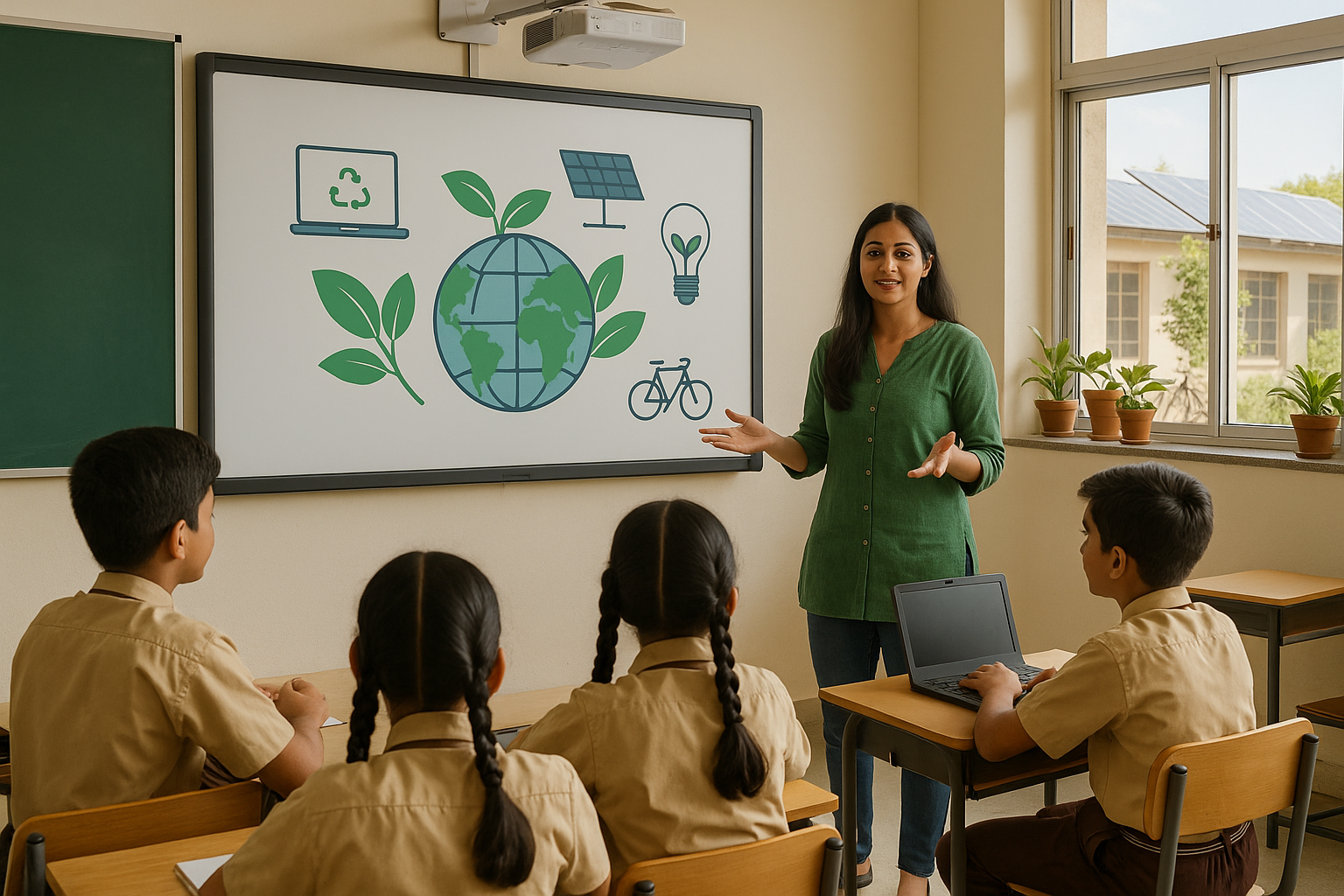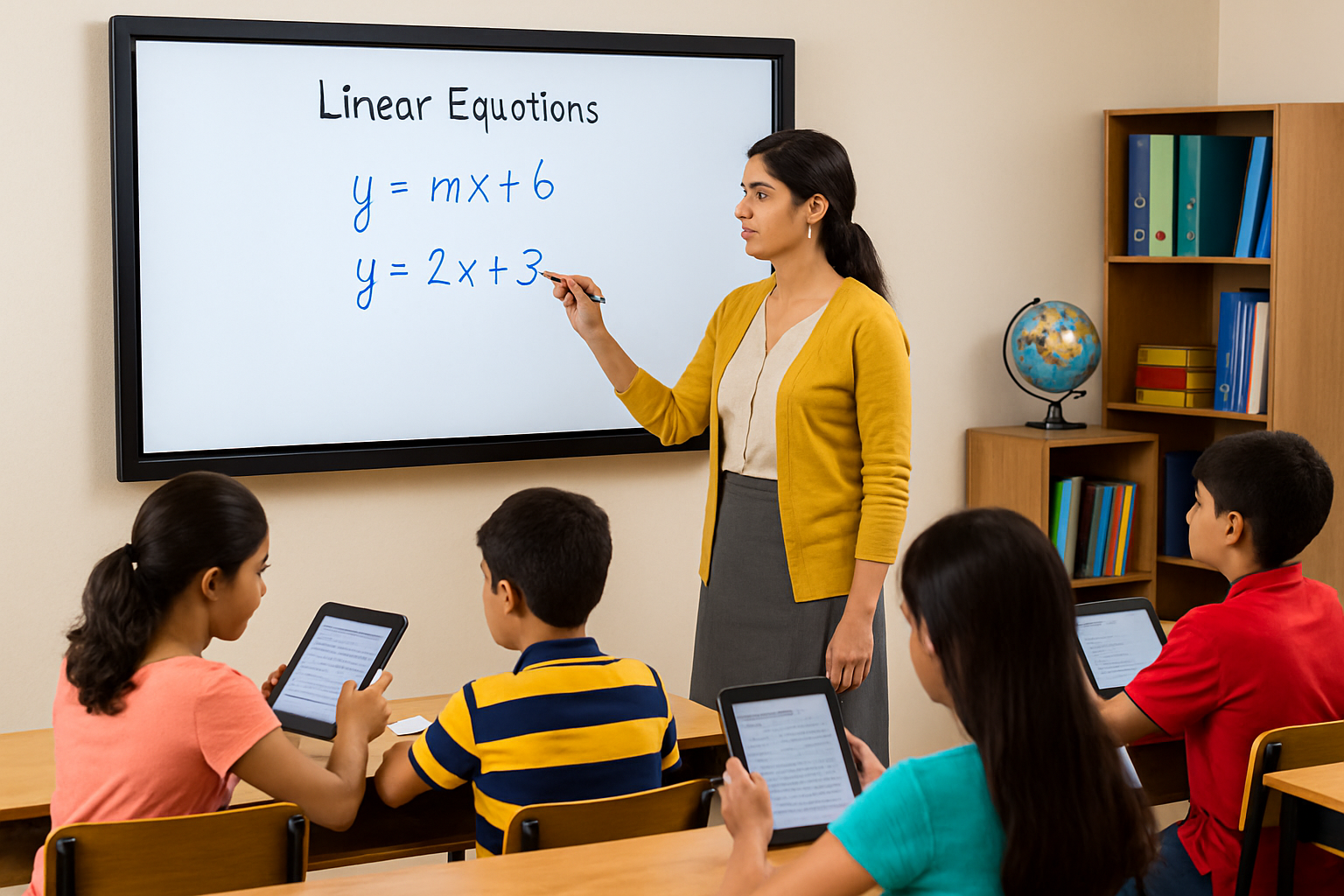What Is a Green Digital Classroom? A Beginner’s Guide to Sustainable Smart Learning

When schools first started adopting digital tools, the focus was simple — make teaching more interactive and accessible. But today, education leaders face a new challenge: how to go digital without leaving a bigger carbon footprint.
That’s where the idea of a green digital classroom comes in. It’s not just about using tech. It’s about using tech wisely in a way that reduces waste, saves energy, and supports long-term sustainability goals.
Let’s look at what this means and how your institution can get started.
What is a Green Digital Classroom
Think of a green or sustainable digital classroom as a smart learning space that’s designed to use less energy, fewer devices, and more sustainable systems. It delivers all the benefits of digital learning like interactivity, content sharing, and class recordings while keeping its environmental impact low.
In practical terms, this means replacing bulky setups with compact all-in-one systems, reducing power consumption, and cutting down on unnecessary hardware. It’s a shift in mindset from “more tech” to “better tech.”
Why It’s Becoming Essential in Education
Digital learning is no longer a trend. It’s a nationwide movement. From urban schools to rural colleges, institutions across India are adopting digital tools to modernize their classrooms. But this rapid shift comes with an unintended side effect: a growing environmental burden.
Globally, over 62 million metric tons of e-waste were generated in 2022 alone from laptops and projectors to tablets and teaching equipment. By 2030, this figure is expected to exceed 80 million metric tons, according to global forecasts. Yet only 22% of this waste was properly recycled, leaving the rest to pile up in landfills or informal dump sites.
This puts schools and colleges in a tough spot. On one hand, they’re expected to adopt digital infrastructure. On the other, they’re being urged to show accountability in how they do it.
The National Education Policy (NEP 2020) promotes digital classrooms, but it also stresses the need for systems that are scalable, efficient, and inclusive, not just packed with devices. Green digital classrooms naturally align with this vision by reducing hardware clutter and promoting long-term sustainability.
There’s also a financial angle: CSR-funded projects and green building initiatives are now placing more weight on energy efficiency and waste reduction. That means educational institutions with a green tech roadmap are more likely to qualify for grants, partnerships, and public recognition.
In short, going green with your digital classroom isn’t just good for the environment, it’s becoming a strategic advantage.
Key Practices for Building a Green Digital Classroom
Here’s what sets a sustainable smart classroom apart:
✅ Energy-Efficient Display Systems
Not all classroom displays are energy smart. Some interactive panels and monitors draw more power than they really need. A more sustainable setup uses projectors or energy-saving LED screens that deliver large visuals but consume less electricity. Choosing displays that adjust brightness based on natural light can also help lower usage. Choosing the right classroom tools can lead to significant long-term savings.
✅ Fewer Devices, More Integration
A common issue in digital classrooms is having too many separate devices—smart boards, webcams, microphones, speakers, and more. Each one adds to the power load and clutter. A greener approach is to use all-in-one systems or integrated setups that combine functions in fewer units. It simplifies maintenance, reduces energy use, and lowers the total number of devices a school needs to purchase and manage.
✅ Classroom Recording with Minimal Overhead
Recording lessons have become the norm in blended learning. But in many cases, it involves extra cameras, lights, mounts, and wires. That’s not ideal for energy use or classroom space. Sustainable classrooms look for built-in or plug-and-play recording options that require less hardware. This way, lectures can be captured without drawing too much power or adding visual noise to the room.
✅ Paperless + Touch-Enabled Learning

Paper waste is a quiet problem in many schools. Printed worksheets, handouts, and notebooks pile up fast. Digital tools like interactive whiteboards, stylus-based note systems, and cloud sharing help reduce paper use drastically. Teachers can write, annotate, and store notes digitally, while students access lessons through devices instead of printouts. It also cuts down on storage needs and physical clutter in the classroom.
✅ Smart Scheduling and Power Management
Sustainable digital classrooms don’t just depend on better hardware, they also manage when and how that hardware is used. Timers and motion sensors can switch off projectors or lights when no one’s in the room. Devices that go to sleep automatically or adjust their settings based on the time of day save even more. It's not just about buying efficient tools, but using them smartly too.
✅ Everyday Practices That Lower the Carbon Footprint
A truly green digital classroom isn’t just about tech. It's also about how space is managed. Here are some simple shifts that quietly create meaningful change:
- Use LED lighting and smart sensors to reduce electricity use
- Improve insulation to cut heating and cooling needs
- Encourage digital textbooks over printed ones
- Promote online classes for guest sessions or workshops to reduce travel
- Start recycling and composting programs on campus
- Encourage walking, cycling, or carpooling to school
- Use the curriculum as a tool to educate students about environmental responsibility.
Small steps like these turn classrooms into living examples of environmental responsibility—something students carry with them beyond school walls.
Common Mistakes to Avoid
Even schools trying to make the right move can fall into some common traps:
- Buying multiple devices for a single task: This increases both energy use and maintenance.
- Forgetting about heat output: High-powered devices can raise room temperature, leading to heavier air-conditioning use.
- Ignoring lifecycle planning: Devices that last only a few years lead to more frequent replacements and more waste.
- Skipping teacher onboarding: If the staff doesn’t know how to use the tools efficiently, even the best system won’t make a difference.
Avoiding these issues helps create a setup that’s not only smart but also sustainable in the long run.
The Roombr Advantage in Green Digital Classrooms
Most smart classroom providers focus on screen size or app bundles. Roombr does something different. It looks at the entire teaching and learning ecosystem.
Designed and made in India, Roombr brings everything together: large interactive projection solution, dual-camera recording, intelligent audio, and screen sharing — all in one device. No need for five different tools or constant charging.
As a result, this cuts e-waste. It installs without wall-breaking or ceiling mounts. And it uses significantly less power than standard smart boards or flat panels. That’s a green win across the board.
Why Educational Institutions Should Act Now
The digital shift is no longer optional. But how you make that shift still is.
By choosing a green digital classroom approach, you prepare your school not just for today’s needs but for tomorrow’s challenges. You save on running costs. You reduce your dependency on power-hungry tech. You position your institution as a leader in both education and sustainability.
And perhaps most importantly, you invest in a model that can grow without constant upgrades or replacements.
If your school or college is planning a smart classroom rollout, now is the time to think green.
Final Thoughts
Going digital doesn’t have to come at the cost of the environment or your budget. A green digital classroom is about getting the most value from your investment, without wasting resources.
It’s about choosing tech that makes sense for your teachers, your students, and your long-term plans.
With the right setup, sustainability isn’t a trade-off. It’s a smarter way forward.
Looking to build a smarter classroom that’s also eco-friendly? Discover what a sustainable digital classroom really means for your school.
Foziya Abuwala
Share
Step Into the future of
Education with Roombr

















